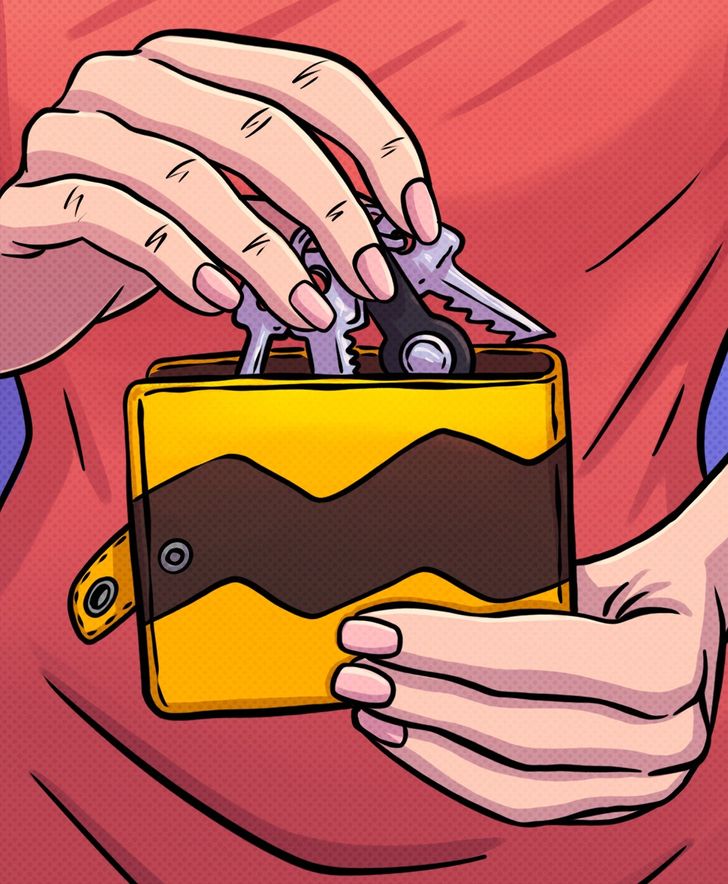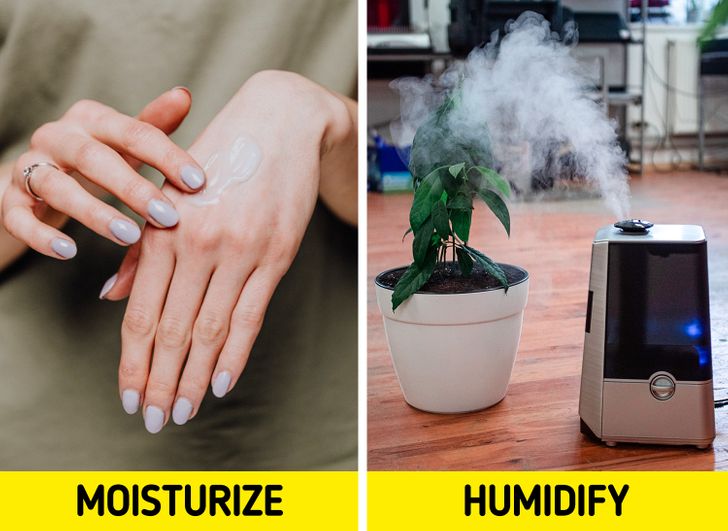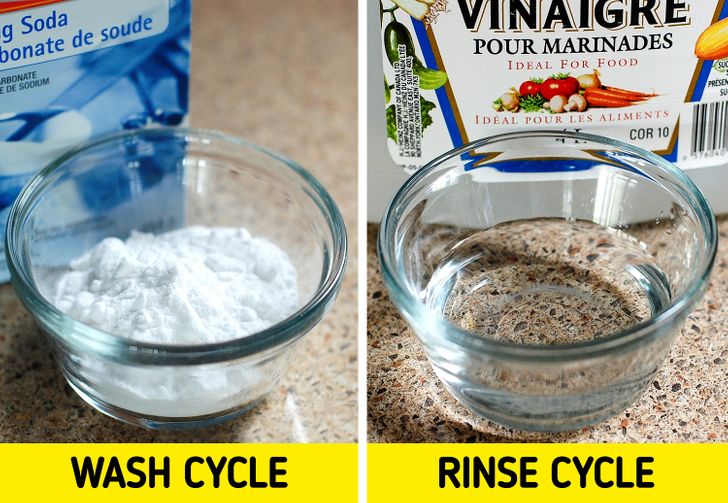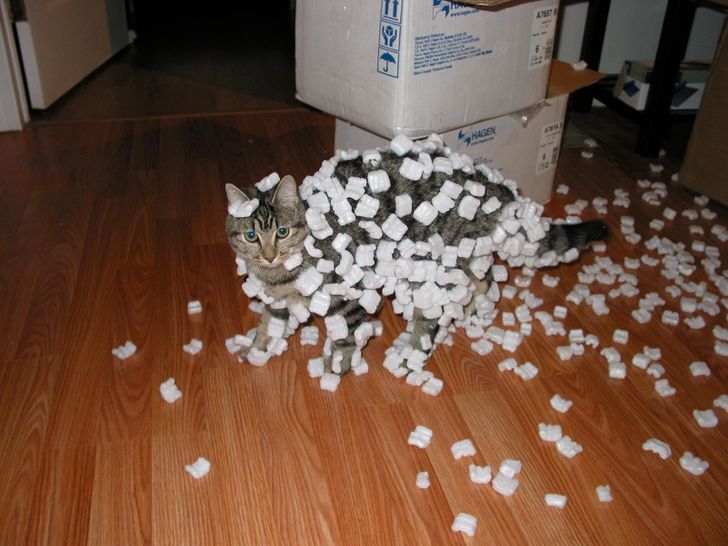Like anyone is going to take the steps to reduce getting mini static shocks that happen maybe once a year loool
What Is Static Electricity and How to Avoid a Shock When You Touch Something

You touch a doorknob or reach out to shake your friend’s hand — and boom — suddenly you’re hit with a light electric shock. A seemingly random electric shock when you touch other people or objects is not an uncommon thing. While it feels like a heart-breaking betrayal, it’s actually just the result of atomic movements happening within and all around us.
We at Bright Side grew curious about why we feel this electric bite and what to do about it. So we decided to uncover this mystery for you.
It all begins with an atom.

If you recall science classes from high school, a single atom is made of 3 things: positively charged protons, negatively charged electrons, and neutral neutrons. Most of the time, atoms remain neutral due to protons and electrons balancing each other out. However, sometimes this balance gets disturbed by rogue electrons wandering around, creating static electricity, and then discharging.
On a visible to us level, it can be caused by objects moving apart or materials rubbing against each other. One of the most famous examples of static discharge is, of course, lightning! However, the balance between protons and electrons eventually gets restored. The moment the electrons come in touch with a positively charged surface, the charge gets dispelled and it’s over.
So, what can we do to prevent it?
1. Moisturize everything
Surprisingly, the weather often has everything to do with it. The electric charge appears most commonly in winter or in dry climates, allowing electrons to easily form on the surface of our skin. Moist air stops negatively charged electrons and we rarely feel an electric charge. While we can’t change the weather, we can surely prepare for it:
2. Carefully pick your wardrobe
Be considerate of the materials you opt for. Certain fabrics are better at conducting electricity than others. So, the type of clothing you wear can absolutely skyrocket your risk for static shock.
- Layered outfits can increase the likelihood of static discharge, as more layers allow materials with different electron charges to interact more. This can result in producing static shock.
- Certain materials — like wool or synthetic fabrics are great electricity conductors. Try to limit the use of these materials. Wear cotton instead — it conducts electricity poorly and lowers your chances of getting shocked.
- Chose leather-soled shoes over rubber-soled ones, as the former are less likely to conduct electricity.
3. Hold onto something metal

A static charge often generates during movements like, for example, while pushing the cart in a store or driving a car. Hold onto things made of metal — like keys — to discharge the energy you build up before touching anything with your bare hands. Alternatively, you can remove the shock by touching things that do not conduct electricity — like glass.
4. Adjust your bedding
Bedsheets have a habit of rubbing together causing static buildup. Steps that might help you avoid this include:
- Avoid layering sheets to minimize fabrics rubbing against each other. If the temperature in your home allows it, try to ditch your top sheet or blanket altogether.
- Chose materials like cotton over wool or synthetic fabrics.
5. Treat your carpet
Having carpeting at home puts you at a greater risk for electric shock. But don’t hurry to get rid of it for good. You can take measures to make it less conducive instead, like:
6. Make your laundry static-safe
Due to constant motion and friction, a washing machine can create a lot of static electricity as well and lend some of it to your clothes. At each step of washing, you can take actions to prevent static:
- Add baking soda to the wash. Soda creates a barrier between positive and negative charges and also acts as a water and fabric softener.
- Add distilled vinegar to the rinse cycle. It reduces static and softens fabric.
- Add a wet cloth to the dryer for the last 10 minutes of drying and turn it down to the lowest heat setting. It will add some much-needed moisture to the laundry after all this electricity-inducing spinning.
- Shake your clothes after drying to prevent static from setting in. Also, try to settle on airdrying your laundry.
Have you ever felt this sensation? What methods do you use to avoid getting hit by an electric shock?
Comments
Related Reads
10 Travelers Who Took “Breaking the Rules” Way Too Far

20+ Moments That Remind Us That Kindness Costs Nothing but Means Everything

I Refused to Share My Inheritance With My Partner — I’m Not His Backup Plan

I Chose to Be Childfree, but Suddenly Became a Mom—And Now I’m Trapped

I Tried to Be the Husband My Wife Needed — She Figured Out What I Was Actually Doing

Everything Seemed Normal in My Marriage Until I Found the Part of Our Story My Wife Never Mentioned

12 Hilarious Doctor Stories That Prove Laughter Really Is the Best Medicine

My DIL Shut Me Out of the Family Vacation but I Didn’t Hold My Tongue

I Absolutely Refuse to Delay My Retirement to Save My Spoiled Daughter and Her Son

I Excluded My Wife From My Kids’ Core Memories—She’s Too Busy Working

18 Stories That Show Kindness Can Be the Strongest Force of All

20 Tutors Reveal What Really Goes On Behind Closed Doors







